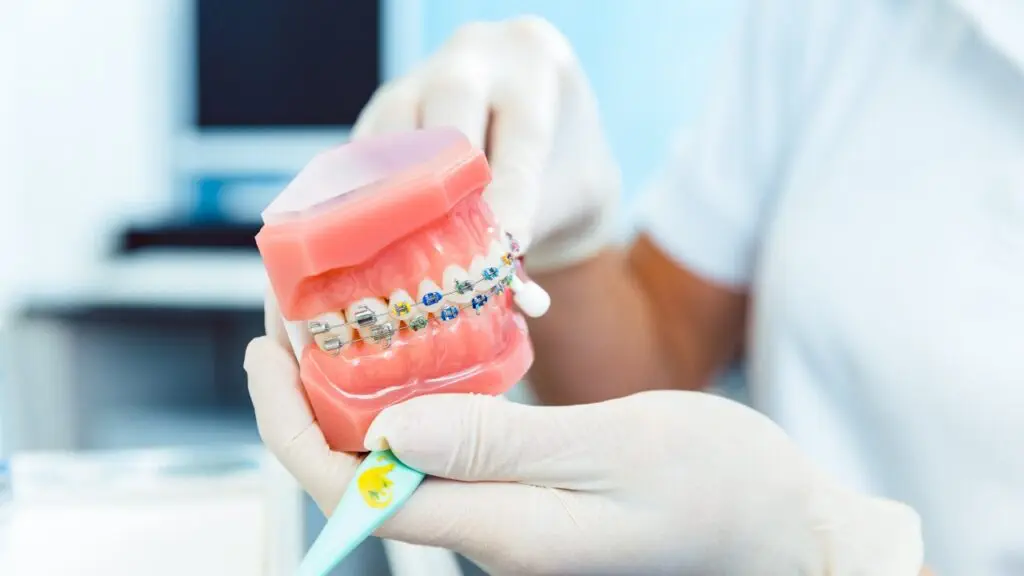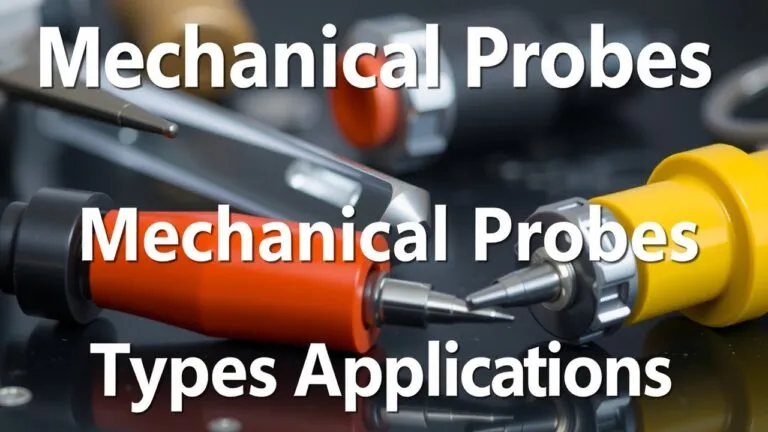Types of power chains for braces vary, impacting treatment speed and comfort. This guide covers different power chain types, their advantages, potential drawbacks, and proper care for optimal orthodontic results.
What Are Power Chains in Orthodontics?

Power chains are stretchy bands used in orthodontics. They look like a series of connected loops. Their main job is to push teeth gently so they can move and line up properly. Unlike the regular ligatures or wires that hold each bracket on its own, power chains connect several brackets along the wire that goes through them. This means they can apply pressure to more teeth at once.
There are different types of power chains available:
- Rubber Power Chains: These are made from stretchy rubber. They’re the most common type used.
- Wire Power Chains: These use metal links instead of rubber. They can provide stronger pressure.
- Closed Power Chains: There are no gaps between the loops. They’re often used to close spaces between teeth.
- Short Power Chains: These are used when only a few teeth need to move.
- Long Power Chains: These work when more tooth movement is needed.
Why Are Power Chains Important in Orthodontic Treatment?
Power chains are very important for many reasons in orthodontic treatment. They help move teeth and close gaps effectively. By pushing on certain teeth over time, they help fix problems like overbites and underbites while also improving overall alignment.
Choosing the right type of power chain is key because it can help get the best results at different stages of treatment. When you pick the right power chain, gaps can close faster, and any misalignment can be addressed more easily.
Role in Tooth Movement
Tooth movement with power chains happens slowly through controlled pressure from elastic materials or metal links. The tension in these chains helps teeth turn or shift side to side, which is important for creating space when teeth are crowded or turned.
During the space closure phase, power chains keep working to help guide teeth into their correct places while making sure patients feel comfortable throughout their treatment.
Importance of Selecting the Right Type
Choosing the right kind of power chain matters a lot! Picking between standard/traditional and heavy-duty options can really change how comfortable patients feel during their time getting straighter smiles. It also affects how well treatment works at each stage of their unique plan. Knowing how different types work will help ensure successful results for everyone involved.
Types of Power Chains Explained
Standard/Traditional Power Chains
Standard or traditional power chains are made of linked pieces that form a stretchy band. They come in different sizes like closed, short, and long. These chains help close small gaps between teeth and align them before putting on brackets. They also correct minor rotations.
Some good things about standard power chains are that they are easy to find and affordable. Many orthodontists use them because they work well for simple movements. But, they can break if too much force is used during tricky movements.
Heavy Duty Power Chains
Heavy duty power chains are thicker and stronger than regular ones. This extra strength helps them move teeth that need a lot of pressure. They can also close bigger spaces between misaligned teeth.
These strong power chains do a great job but may hurt some patients. There’s also a chance of damaging brackets if the pressure is too high or lasts too long.
Elastic Rubber-Based Power Chains
Elastic rubber-based power chains are made from flexible materials, which makes them more comfy than metal ones. This design helps make gentle adjustments, perfect for sensitive patients or when only slight movements are needed.
While these chains focus on comfort, they can stretch over time. Stretching might lessen how well they work for applying pressure to the teeth.
Custom-Made Orthodontic Power Chains
Custom-made orthodontic power chains are designed just for you using special techniques. They fit specific needs for complex dental issues by applying exact forces where they’re needed most.
The best part about custom-made chains is that they provide accurate results. However, making these takes longer and can cost more than regular options.
Materials Used in Manufacturing Different Types of Braces’ Power Chains
Elastic/Rubber-Based Material
Elastic materials, often called rubber-based materials, are key in making power chains for braces. These materials are strong yet flexible, which helps during orthodontic treatment. They are made to last through daily use while also keeping patients comfy. The stretchiness of these materials helps move teeth over time by applying steady pressure.
Different sizes and types of elasticity meet various patient needs. Some may need tighter elastic ligatures for more forceful tooth movement, while others prefer looser options for gentler pressure. This flexibility makes rubber power chains suitable for many different cases.
Some brands offer great rubber power chains available today. Examples include 3M’s “Transbond” series and Ormco’s “GAC” line, which come in different colors and sizes to suit personal styles.
Adding images or diagrams of the elastic materials used in braces can help patients and their families understand better.
Health Considerations
When we talk about health issues with power chains made from elastic materials, safety is super important. Manufacturers follow strict health standards to ensure the materials used are safe for oral tissues. This means they won’t cause bad reactions inside the mouth.
Advances in design have also focused on comfort. Modern designs often have smoother edges and softer textures to help lessen irritation on gums and cheeks. This is a big deal for many people getting orthodontic treatment because discomfort can be a major concern while wearing braces.
Industry Trends
Orthodontics is changing a lot due to new technology and fresh ideas that aim to make braces easier to wear. One trend is adjustable features in power chains. These let orthodontists customize lengths and sizes for each patient’s unique needs.
Looking ahead, exciting technologies may lead to even better materials for braces. Research into new compounds could create stronger options that remain comfortable—helping both dentists find good solutions and patients have better experiences during treatment with braces.
Power Chains Comparison
Strength Comparison
When you think about power chains for braces, strength matters a lot. Standard Chains are good for general adjustments. They work well for small tooth movements and closing gaps, but they might not hold up if there’s too much pressure.
Heavy Duty Chains are thicker and stronger. They’re made for tough jobs like closing bigger gaps or moving teeth that don’t want to budge. But they can be uncomfortable since they apply a lot of force.
On the flip side, Elastic Rubber-Based Chains aren’t as strong, but they are very flexible. They are great for gentle adjustments, especially for patients who need a softer touch.
Finally, Custom-Made Chains can have different strengths. Their strength depends on how they are designed for each patient’s specific needs. This gives orthodontists better control over how much force is used during treatment.
Flexibility Analysis
Flexibility plays a big part in making sure patients feel comfortable during treatment. Both Standard and Heavy Duty Power Chains don’t have much flexibility. They keep steady pressure, but this can make wearing them uncomfortable.
Elastic Rubber-Based Power Chains, however, are super flexible. They allow teeth to move slowly and smoothly, which helps avoid discomfort while adjustments happen. This makes them great for sensitive situations.
Cost Considerations
Cost is a big deal when picking which power chain to use. Standard Power Chains are the most affordable and easy to find, making them popular with many patients who need regular care.
Heavy Duty Options cost a bit more but provide better performance when stronger forces are necessary without going over budget.
Next up are Elastic Rubber-Based Power Chains, which usually cost more than average due to their special materials made for comfort.
Lastly, Custom-Made Power Chains come at premium prices since they are specially designed for complex cases where extra care is needed.
Use Cases Overview
Knowing the different use cases helps choose the right power chain:
- For General Adjustments, standard chains work best in everyday orthodontic procedures.
- If you’re dealing with stubborn teeth that need a strong push—like those that resist movement—then heavy-duty options should be your go-to.
- For situations that need gentle movements without stressing patients—elastic rubber-based chains really shine.
- In complicated cases, custom-made solutions offer precise results tailored closely to what each patient needs.
Breakage Susceptibility
The chances of breakage vary by type and affect maintenance:
- Standard chains are moderately prone to breaking but manageable with regular orthodontist check-ups.
- Heavy duty chains break easily if they’re not used correctly; this can even harm brackets if too much force is applied.
- Elastic options hold up well against wear and tear; still, long-term use might stretch them out and reduce their effectiveness.
- Custom-made chains usually have low breakage risks because their designs minimize common issues found in mass-produced ones.
Comfort Levels During Treatment
How comfortable a patient feels depends on what materials are used:
- Standard chains give moderate comfort, though some users feel slight irritation from friction against gums or brackets at first; adjusting properly helps ease these feelings afterward!
- Heavy options often lead to less satisfaction since the high tension usually means more discomfort unless managed well by professionals during treatment.
- Elastic choices score high on comfort—they’re easy to wear even when doing serious realignments, which helps improve how likely patients will stick with their treatment!
- Custom designs offer a balance of precise movement while being friendly to use, giving satisfying experiences while reaching desired results!
How Do Orthodontists Choose the Right Type?
Choosing the right type of power chains for braces is key for orthodontists. This choice can affect how well treatment works and how comfortable patients feel.
Factors That Influence Selection
Several things influence how orthodontists pick power chains during treatment:
- Severity of Malocclusion or Misalignment: How crooked the teeth are matters. If someone has a severe misalignment, stronger power chains may be needed to help move the teeth correctly.
- Stage of Treatment Plan: Different stages in treatment need different types of power chains. At first, standard elastic chains might be used for small changes. Later on, custom solutions could help close gaps or shift teeth into place better.
- Patient Comfort Considerations: It’s super important to think about patient comfort. Some folks might feel more at ease with softer elastic options instead of metal ones. Comfort can affect how patients stick to their treatment plans.
Role of Professional Expertise
An orthodontist’s experience plays a big part in finding the right fit for each patient. They check individual needs through evaluations and personal talks.
- Patients should trust their orthodontist’s advice on power chain selection. This ensures that they get the best results while wearing braces.
A good orthodontist combines knowledge with understanding each patient’s needs, making sure they feel supported throughout their treatment process.
Benefits & Drawbacks by Type
Pros and Cons Overview
Standard
Standard power chains are a common choice in braces. They connect brackets and help move teeth. A big plus of standard power chains is that they are affordable. This makes them popular with many patients. They provide good force during braces adjustments, moving teeth slowly into place. However, some people might feel discomfort because these chains apply steady pressure.
Heavy
Heavy-duty power chains are for those who need more powerful tooth movement. These chains can push harder on resistant teeth, making them shift faster. While they can speed up results, they can also cause more soreness due to the strong forces they apply.
Elastic
Elastic rubber-based power chains focus on comfort. They gently adjust teeth without causing much pain. Their design helps with flexibility, which is nice for sensitive mouths. However, elastic chains can wear out quicker than heavier options, which might make them less effective over time.
Custom-Made
Custom-made orthodontic power chains are specially made for each person’s needs. They control the force applied to each tooth very precisely. This makes them perfect for treating complex malocclusions. But, these custom options usually cost more than standard ones.
Potential Risks With Improper Usage
Using any power chain the wrong way can lead to issues like root resorption risk and gum health concerns. If an orthodontist doesn’t fit the chain properly or too much pressure is used, it can harm not just the teeth but also nearby tissues. Patients must follow their orthodontist’s instructions closely when using these devices to avoid problems.
Maintaining Optimal Oral Hygiene with Power Chains
Keeping your teeth clean is super important when you’re wearing braces, especially with power chains. These stretchy or metal pieces help your teeth move where they need to go. But they can also trap food and plaque if you don’t take care of them. Here’s how to keep your mouth healthy while wearing braces.
Oral Hygiene Essentials During Treatment
Brushing and flossing are key when you have braces. Use a soft-bristled toothbrush. It cleans around the brackets without hurting them. When you brush, hold the brush at a 45-degree angle to your gums. Use gentle circular motions to remove plaque from both teeth and around power chains.
Flossing can be tough with braces, but it’s very important for good oral health. You can use interdental brushes or floss threaders to help get between your teeth. These tools are great for removing food stuck in places regular floss can’t reach, helping to stop tooth decay and gum disease.
Dietary Restrictions Recommended For Avoiding Damage
Some foods can mess up your power chains and cause discomfort. Here are some things to avoid:
- Sticky candies like caramel or taffy
- Hard foods like nuts or popcorn
Instead of these, choose softer snacks like yogurt, applesauce, or mashed potatoes. Eating safe foods keeps both your dental health in check and your braces in good shape.
Emergency Handling Steps In Event Of Broken Brace Components
If a power chain breaks or comes loose, don’t panic! Just follow these steps:
- Stay Calm: This happens sometimes.
- Check Your Braces: Look for any other damage.
- Stick to Soft Foods: Avoid hard stuff until you see an orthodontist.
- Call Your Orthodontist: Set up an appointment for repairs.
Knowing what to do if something breaks helps keep your treatment on track while you maintain good oral hygiene habits along the way.
Frequently Asked Questions (FAQs)
What types of power chains are there?
There are several types of power chains for braces. These include O-shaped and C-shaped power chains. Each type serves different purposes based on the required tooth movement.
How do power chains affect treatment time?
Power chains can speed up the alignment process. They apply continuous pressure, helping to move teeth into position more quickly. This often results in a shorter overall treatment time.
What materials are used in making power chains?
Power chains are mainly made from elastomeric rubber or metal. The choice of material affects their flexibility and strength.
How often should power chains be changed?
Typically, power chains need to be replaced every 4 to 6 weeks. Your orthodontist will advise on the best schedule for your specific case.
What problems can arise with power chains?
Common issues include stretching, staining, or breaking. Patients should report any problems to their orthodontist promptly for resolution.
Understanding Power Chain Characteristics
- Diameter: The thickness of the power chain impacts its strength and durability.
- Tension: Proper tension is vital for effective tooth movement.
- Durability: Some materials may wear out faster than others, affecting treatment.
Other Orthodontic Components
- Lingual Arch: Used to maintain space in the dental arch.
- Intermaxillary Elastics: Connect upper and lower teeth for bite correction.
- Braces Types: Options like traditional, self-ligating, and clear aligners offer different benefits.
Treatment Considerations
- Ideal Candidates: Power chains work well for those with gaps or misaligned teeth.
- Patient Compliance: Following care instructions enhances effectiveness and comfort.
- Jaw Alignment: Proper use can aid in correcting jaw disorders like TMJ.
Financial Aspects
- Cost of Power Chains: Often included in overall braces cost rather than separately priced.
- Financing Options: Many orthodontists offer payment plans to manage treatment costs effectively.
Related Topics
- Types of braces
- Types of orthodontic treatment
- Types of malocclusion
- Types of elastic materials
- Types of brackets
- Types of wires (in orthodontics)
- Types of space maintainers
- Types of aligners
- Types of dental issues addressed by braces



Types of Power Chains for Braces: A Guide to Benefits, Risks & Care